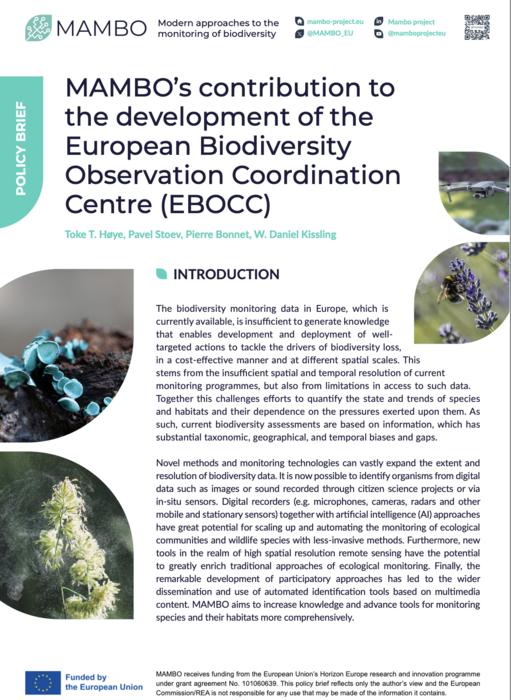The EU-funded project MAMBO (Modern Approaches to the Monitoring of Biodiversity) announces the release of its first policy brief, which highlights MAMBO’s contribution to the development of the European Biodiversity Observation Coordination Centre (EBOCC).

Credit: PENSOFT
The EU-funded project MAMBO (Modern Approaches to the Monitoring of Biodiversity) announces the release of its first policy brief, which highlights MAMBO’s contribution to the development of the European Biodiversity Observation Coordination Centre (EBOCC).
EBOCC aims to coordinate biodiversity monitoring across Europe by fostering collaboration among Member States and organisations, integrating monitoring results, and analysing data to derive indicators that support policies. By 2030, EBOCC envisions establishing harmonised data flows to conserve Europe’s ecosystems, aligning with the EU Biodiversity Strategy for 2030.
The EU Parliament and Commission have initiated actions to establish EBOCC, with its mission formulated by key stakeholders through the EuropaBON project. EBOCC focuses on supporting coordination, ensuring harmonised data flows, and analysing information at the EU level to aid conservation efforts and provide regular biodiversity updates.
Coordinated by the University of Aarhus in Denmark, the MAMBO consortium involves researchers from 10 organisations across 8 European countries. MAMBO’s work programme aims to provide the knowledge, tools and infrastructure for monitoring wildlife and their habitats more comprehensively. MAMBO has the potential to improve the ecological monitoring landscape in Europe by developing innovative monitoring tools and engaging with stakeholders. The project is mapping stakeholder landscapes, synthesising user needs, and co-designing future monitoring tools. MAMBO’s tools are meant to integrate with existing research infrastructures, and enhance the current databases with images and sounds to improve machine-learning models.
These advancements will lead to new image-based monitoring applications and improved habitat condition indicators derived from remote sensing and LiDAR data. MAMBO’s tools will feed into models that enhance biodiversity monitoring and adaptive strategies, highlighting regions with high uncertainty. Continuous cost-efficiency assessments are conducted to ensure these tools deliver maximum value.
Through these efforts, MAMBO seeks to demonstrate its impact on enhancing biodiversity monitoring, with a particular focus on its role in the development of the European Biodiversity Observation Coordination Centre (EBOCC). By doing so, MAMBO supports the overall objectives of the EU Biodiversity Strategy for 2030.
For more information, please access the full policy brief through MAMBO’s website or the project’s collection in the Research Ideas and Outcomes Journal (RIO).
***
This project receives funding from the EU Horizon Europe Research and Innovation Action programme under Grant agreement No. 101060639.
Views and opinions expressed are those of the author(s) only and do not necessarily reflect those of the European Union or the European Commission. Neither the EU nor the EC can be held responsible for them.



